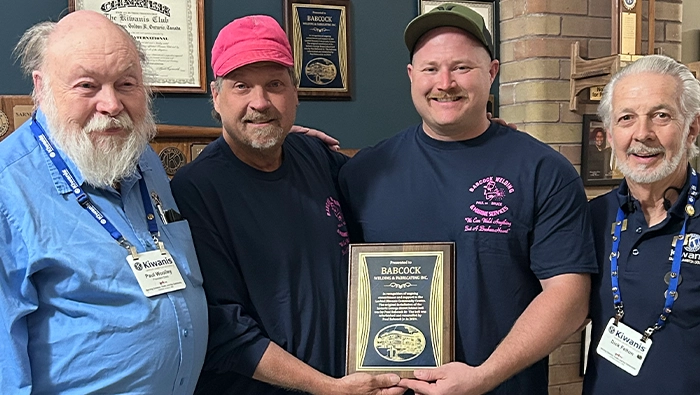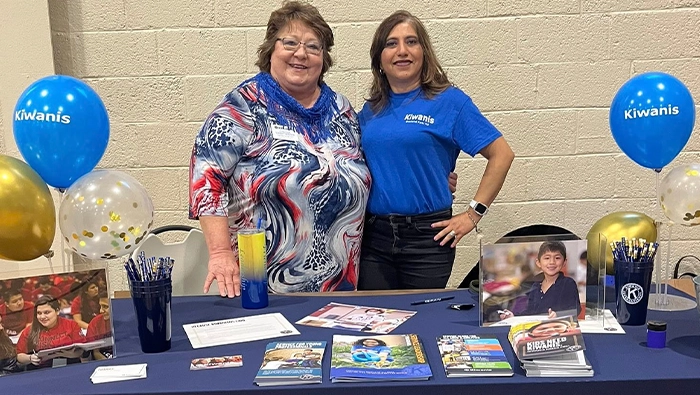
Kiwanians get kindness in return
A club in Canada finds itself on the receiving end of the community’s generosity.
By Julie Saetre
Submitted by the Locheil Kiwanis Community Centre, Ontario, Canada
Kiwanians in Sarnia, Ontario, Canada, are accustomed to helping their community. Recently, however, members of the Sarnia-Lambton Golden K Kiwanis Club were the recipients of community kindness when a longtime club symbol received an unexpected refresh.
The Sarnia-Lambton club, through its Sarnia Kiwanis Foundation, operates the Lochiel Kiwanis Community Centre, which serves some 1,000 children per week through various youth organizations. Formerly a school, the building was converted into the Community Centre in 1985. To mark the occasion, the club installed a refurbished heritage bell on a cairn outside the building.
In 2024, someone cut the bronze hanger and stole the bell. Thanks to the Sarnia Police Service, the bell was recovered and returned to the Kiwanians — but it had been damaged during its time away.
That’s when local welder Paul Babcock Jr. stepped in. Ironically, his father, Paul Babcock Sr., had restored the bell in 1985. The younger Babcock took it to the family’s shop, Babcock Welding, where he brazed the bell and then built a new tripod with a sturdier hanger that would stand up to any future theft attempts. And he did all the work at no cost.
As a thank you, the Sarnia Kiwanis Foundation awarded Babcock Jr. two plaques of recognition: one to display at the Community Centre and one for the Babcock Welding shop.
“Babcock Welding and Paul Babcock Jr. do a lot for the Sarnia community besides this instance,” says Richard Felton, executive director of the Locheil Kiwanis Community Centre. “We are really grateful to have people like this to help us when needed.”
Has your club received support from the community in an unexpected way? If so, what happened and how did you recognize the effort? Let us know at shareyourstory@kiwanis.org.



